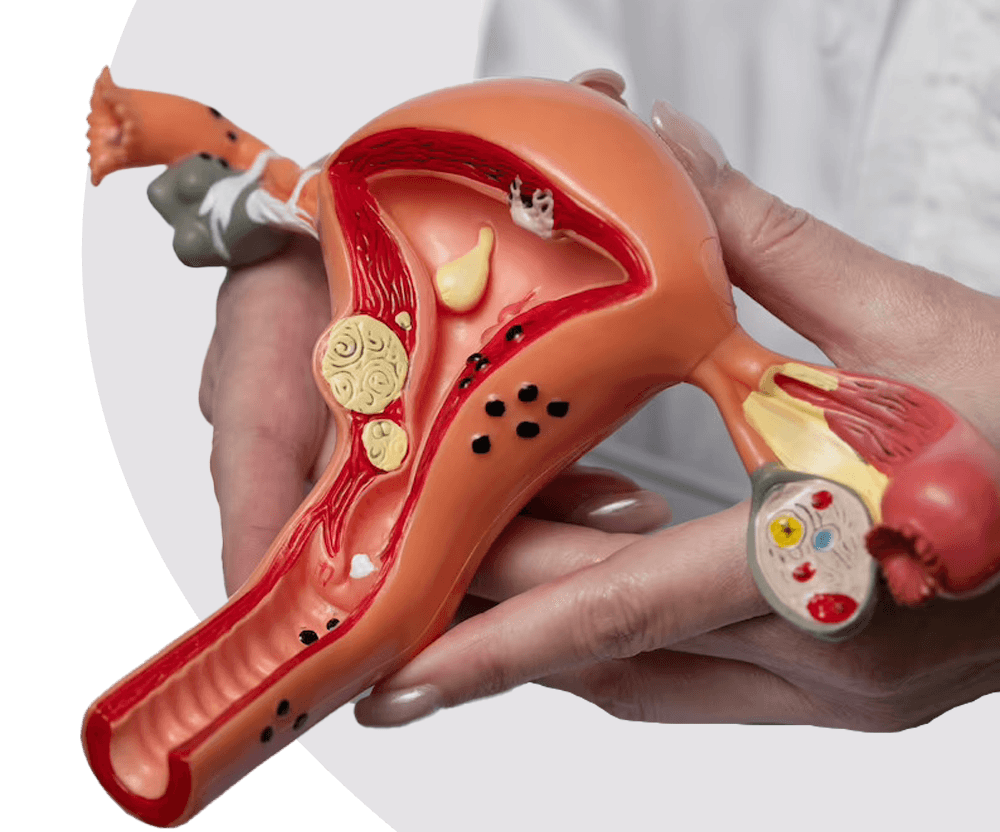Vulval Cancer
Vulval cancer is cancer that develops on the surface of the female genitalia genitalia referred to as Vulval. Vulval includes the following structures: the mons pubis, the clitoris, the urethral opening and the vaginal opening and the two skin folds on either side (the labia major and labia minora). It is a rare cancer and accounts for only 4% of all gynaecological cancers.
This form of cancer is most often found in older women and less common than cervical, endometrial or ovarian cancers which are typically known to affect the female reproductive system.
Symptoms of Vulval Cancer:
Types of Vulval Cancer
- Squamous cell Carcinoma: About 90% of all cases of vulval cancer are of this type and is very often seen as a progression of Vulvar Intraepithelial Neoplasia (VIN), which is a precancerous condition. Squamous cell cancers are caused by persistent Human Papillomavirus (HPV) infection and are more prevalent in younger women. Vulvar Dystrophy a condition common in older women can also lead to squamous cell carcinoma.
- Verrucous carcinomais a subtype of squamous cell cancer and emerges as a slow-developing wart.
- Vulvar Melanoma: This accounts for almost 5% of all cases of vulval cancer and most melanoma conditions appear in black or dark brown shades, but can also appear in white, pink or red shades. Vulvar melanomas can sometimes initiate in a mole, so a change in a mole that has been present for years can also indicate melanoma.
- Adenocarcinoma: This type of cancer originates in the glandular tissue, which lines the vulva and can appear like a swelling or non-healing ulcer.
- Sarcoma: Sarcoma develops in the connective tissues of the vulva, is an aggressive cancer type and makes a rare occurrence.
- Vulvar intraepithelial neoplasia (VIN): VIN is a precancerous condition and most often appears with itching that does not subside or heal. An area with VIN may look different from normal vulvar skin, it’s often thicker and lighter than the normal skin surrounding the condition. However, an area with a VIN condition can also appear red, pink, or darker than the surrounding skin. Since these changes are often caused by other conditions that are not pre-cancerous, leading to women misinterpreting the conditions. Some women treat themselves with over-the-counter medications. It is essential to consult your doctor without delay and receive proper treatment and minimize the risk of progression to cancer.

Diagnostics Facilities
Advanced Cancer Diagnostics
Advanced Cancer Treatment
General Diagnostic Facilities
Causes of Vulval Cancer
The causes of vulval cancer are not very clear, however, many factors (avoidable or unavoidable) have been identified that may increase the risk of the disease and they include:
- Age: Most of the cases of vulval cancer are seen in women over the age of 70 years. Less than 20% of cases are seen in women below 50 years of age.
- Exposure to Human Papillomavirus (HPV): Women who have been infected with HPV are at a higher risk of contracting vulva cancer.
- Vulvar intraepithelial neoplasia (VIN): VIN is a precancerous condition, where the cells of the epithelia can develop into squamous cell carcinoma over the years.
- Lichen sclerosis or atrophicus (LSA): Lichen sclerosis is an uncommon condition that creates patchy, white skin that appears thinner than normal. It usually affects the genital and anal areas. Anyone can get lichen sclerosis but postmenopausal women are at higher risk. These women are at an increased risk of squamous cell carcinoma of the affected area.
- Smoking: Smoking increases the risk of vulvar cancer.
- Weak immune system: People taking medications to suppress the immune system (individuals who’ve undergone organ transplant), and those with conditions that weaken the immune system, such as human immunodeficiency virus (HIV) infection, have an increased risk of contracting vulvar cancer.
When to see the Doctor?
If the symptoms persist for more than two weeks, it is recommended to consult a doctor.

Prevention of Vulval Cancer

Testing for Vulval Cancer includes:
After consultation with your specialist, the following tests may be carried out:
- If the area of suspicion is small, excisional biopsy is performed i.e. the entire lesion will be removed and sent for histopathological examination.
- If the area of abnormal growth is large, a small punch biopsy is performed and a small portion of the growth is taken for testing.
- CECT scan: A CT scan of the abdomen and pelvis is recommended to detect the spread of cancer in pelvic or abdominal lymph nodes or to other organs like the liver.
- MRI:Sometimes an MRI scan is taken if the cancer is very close to the urethra or rectum.
- PET CECT:A PET CT scan is taken in advanced or recurrent cases to rule out the spread of cancer to other sites like the lungs, liver, bone, etc.
Treatment for Vulval Cancer
Surgery:
- Excision of primary tumour: Excision entails the removal of the primary tumour with a margin of normal tissue. In the case of large tumours, a Vulvectomy is performed. This procedure removes the vulval either in part or in entirety and comprises the following types:
- Skinning vulvectomy
- Simple vulvectomy
- Modified radical vulvectomy
- Radical vulvectomy
- Pelvic exentration: This procedure is done to remove the vulva, surrounding lymph nodes, and one or more infected organs.
- Lymph node dissection: In some cases, unilateral or bilateral lymph nodal dissection is performed, depending on the depth of the primary tumour and its spread to the lymph nodes.
- Radiation therapy: This process makes use of high-energy rays to target and destroy cancer cells. Radiation treatment can be internal/external and is used as an alternative to surgery or after surgery as adjuvant therapy.
- In external radiation, the beams are aimed at the cancer site with the help of a machine.
- Ininternal radiation, the beams emerge from a capsule that comprises radioactive material. These capsules are placed at the site of the primary tumour. And is also called implant radiation or brachytherapy.
- Chemotherapy: Chemotherapy is given in the form of injections or tablets depending on the stage of the disease. It is recommended for a duration of 2-3 weekly cycles, comprising a total of 6 cycles. In some cases also recommended along with radiation therapy (concurrent chemo-radiotherapy).
- Biological therapy or immunotherapy: In advanced cases, biological therapy or immunotherapy is suggested as a treatment approach wherein the cells that impact the body’s immune response are targeted to help the body destroy cancer cells.

Doctors

Dr. Aruna Prabhu

Dr. Deepti Mishra

Dr. Sachin Chavre


